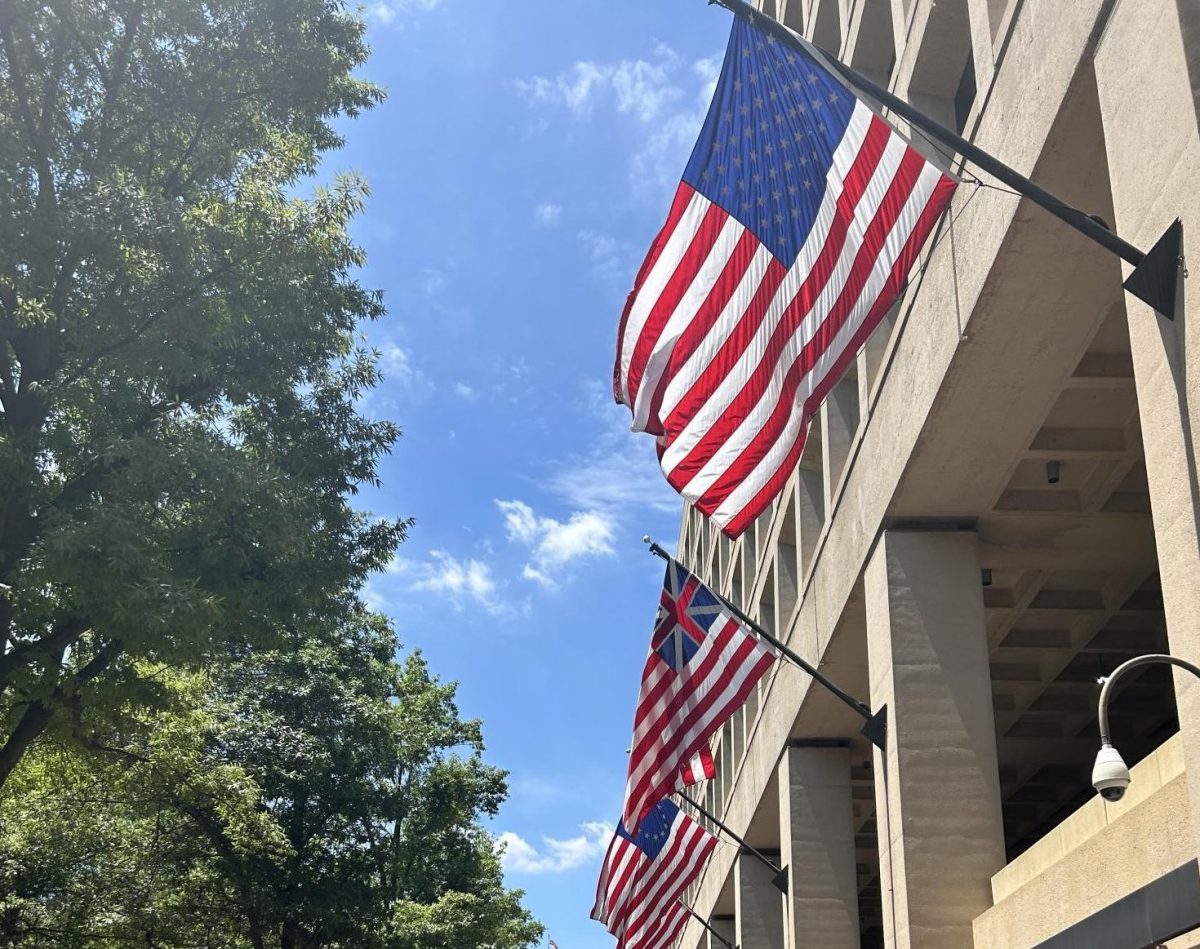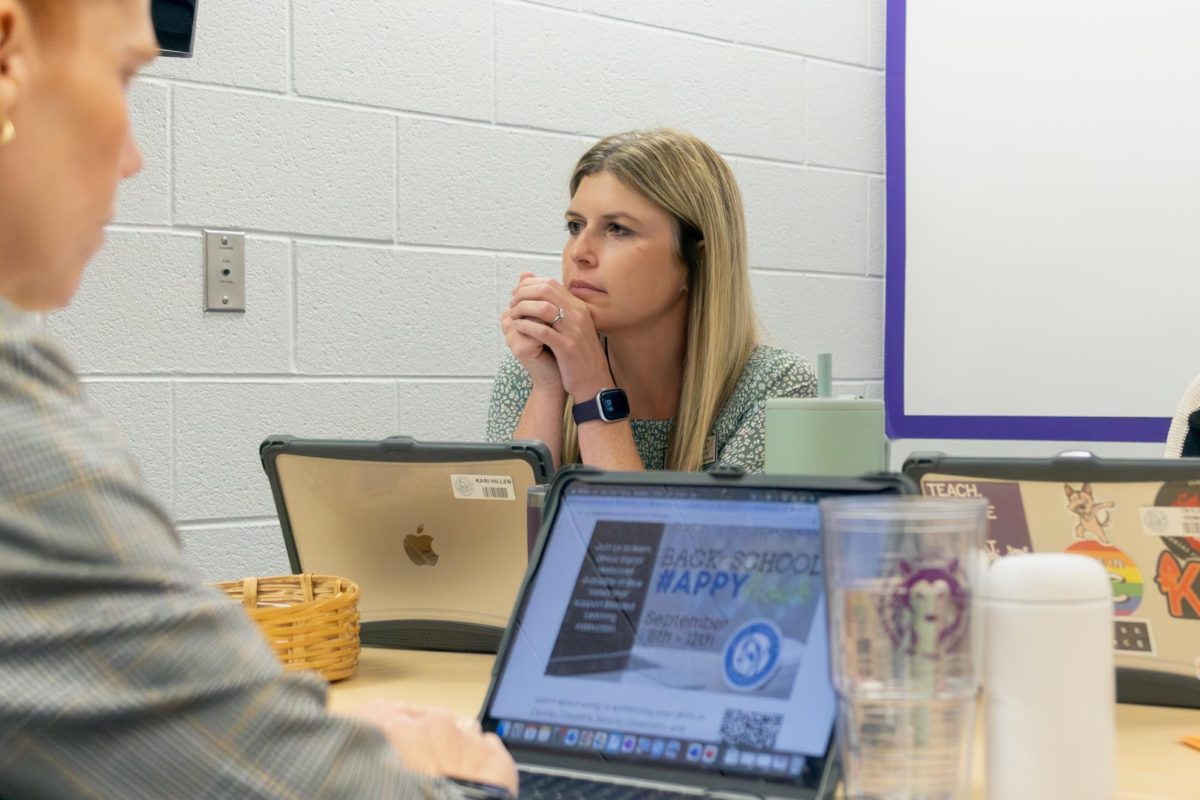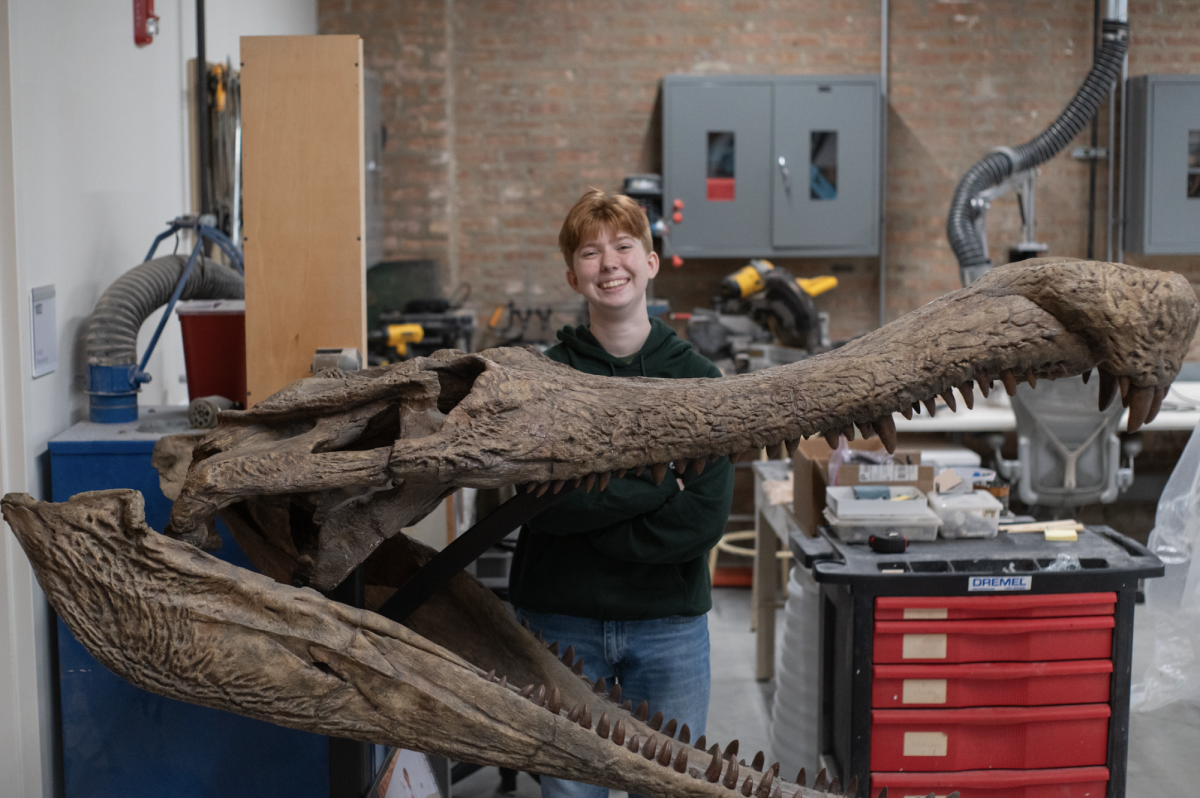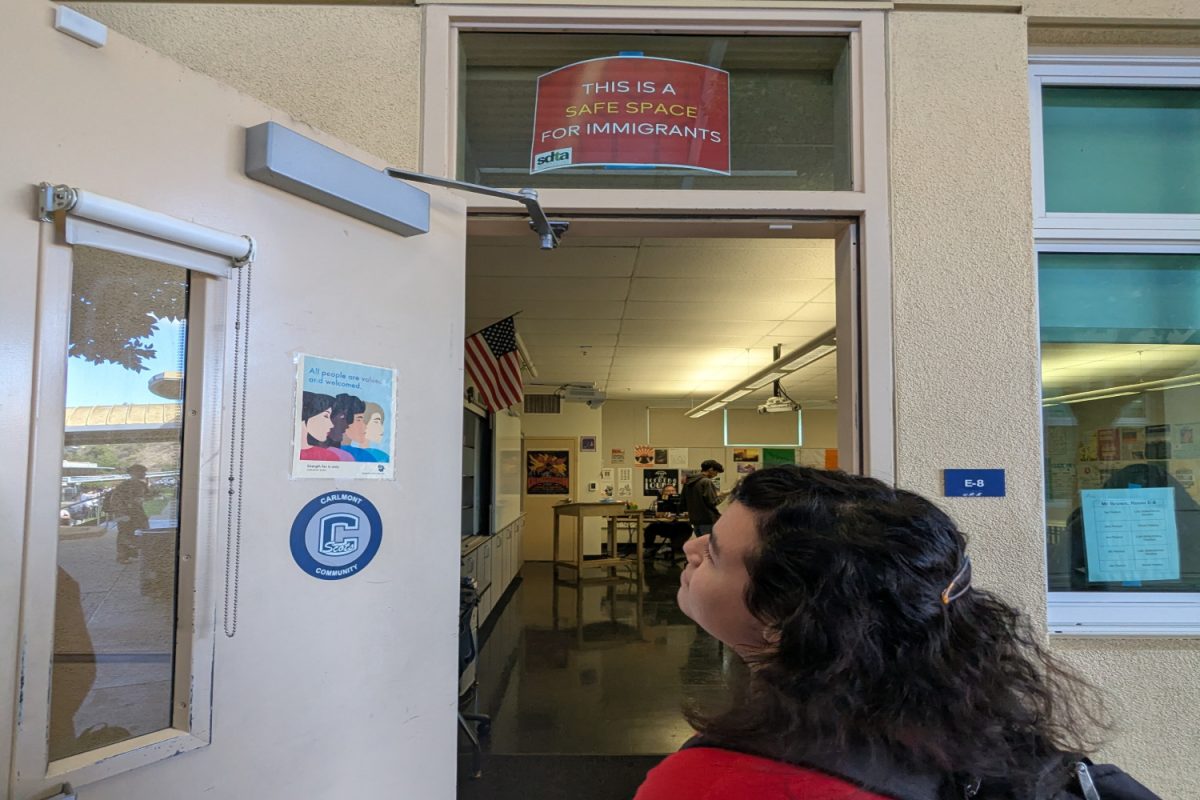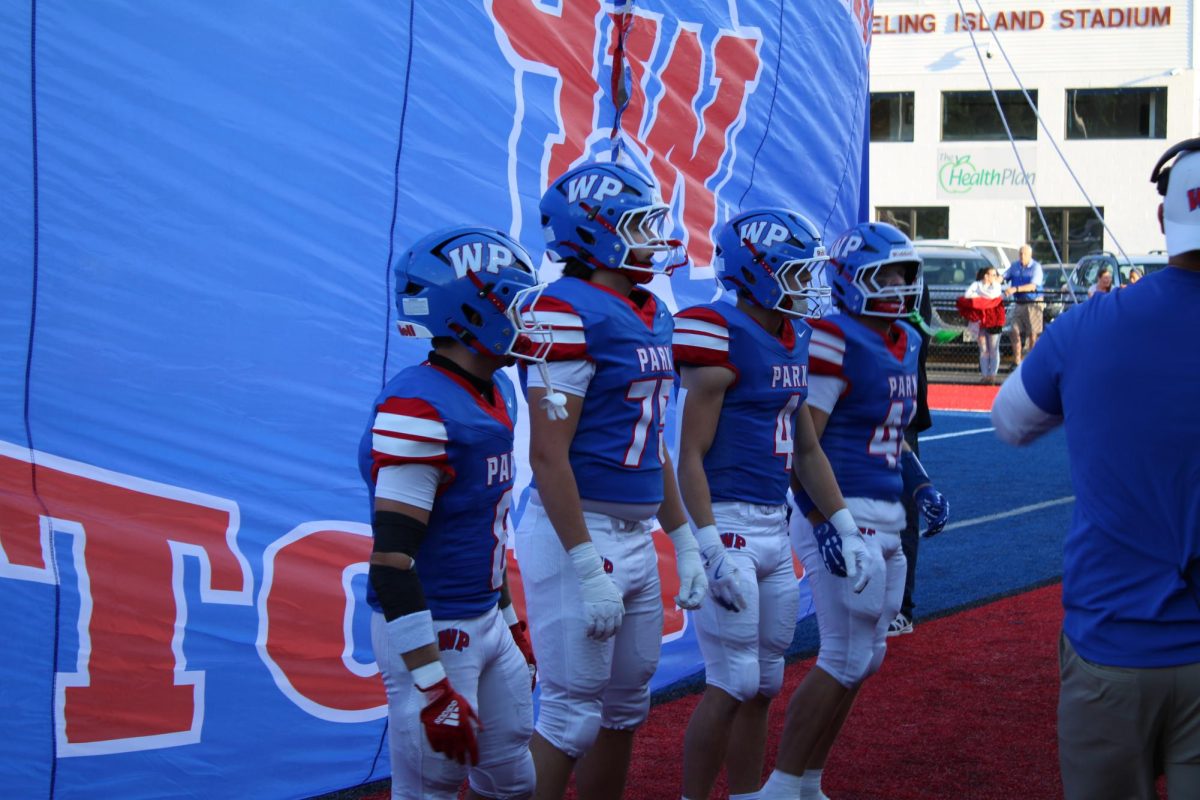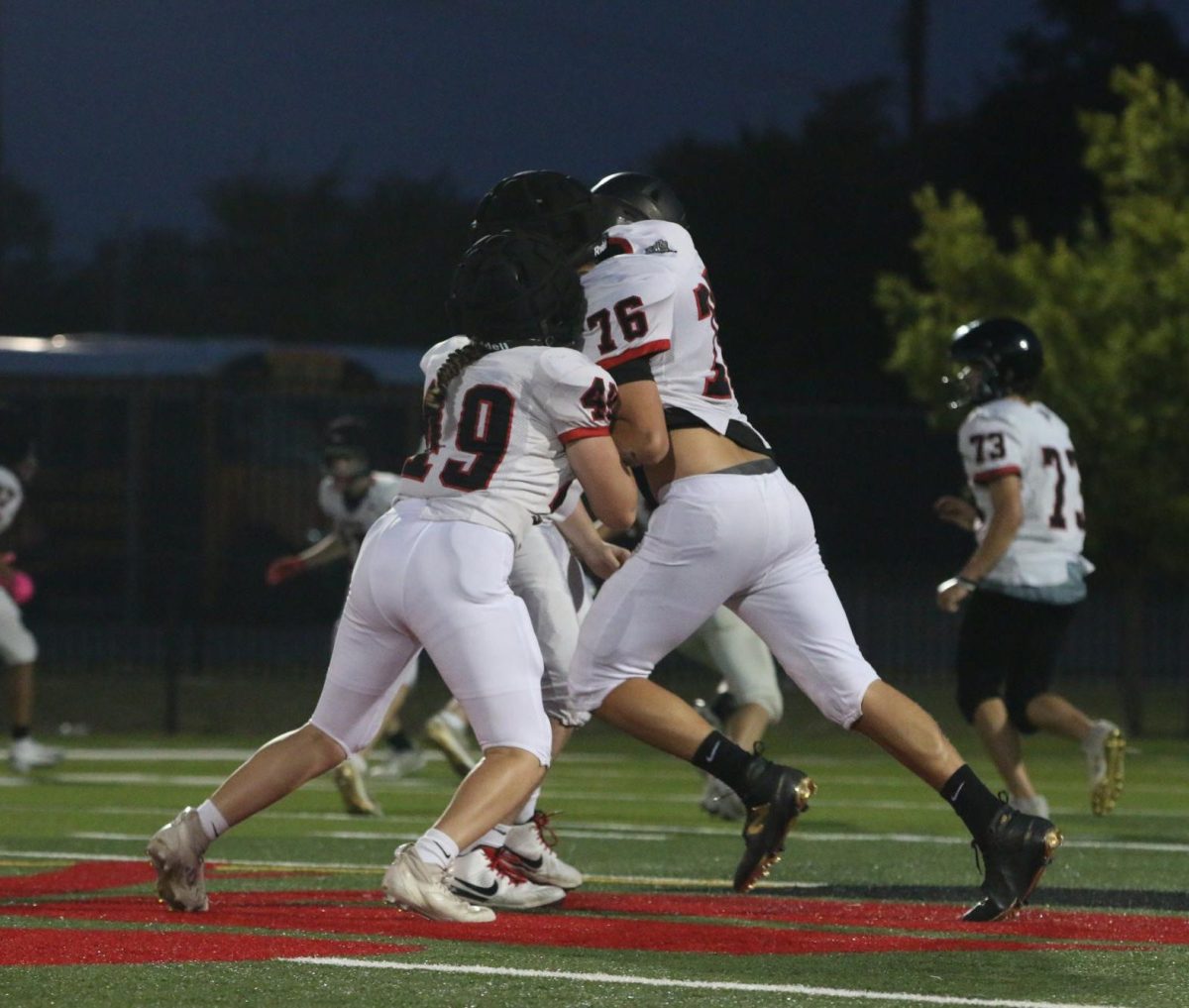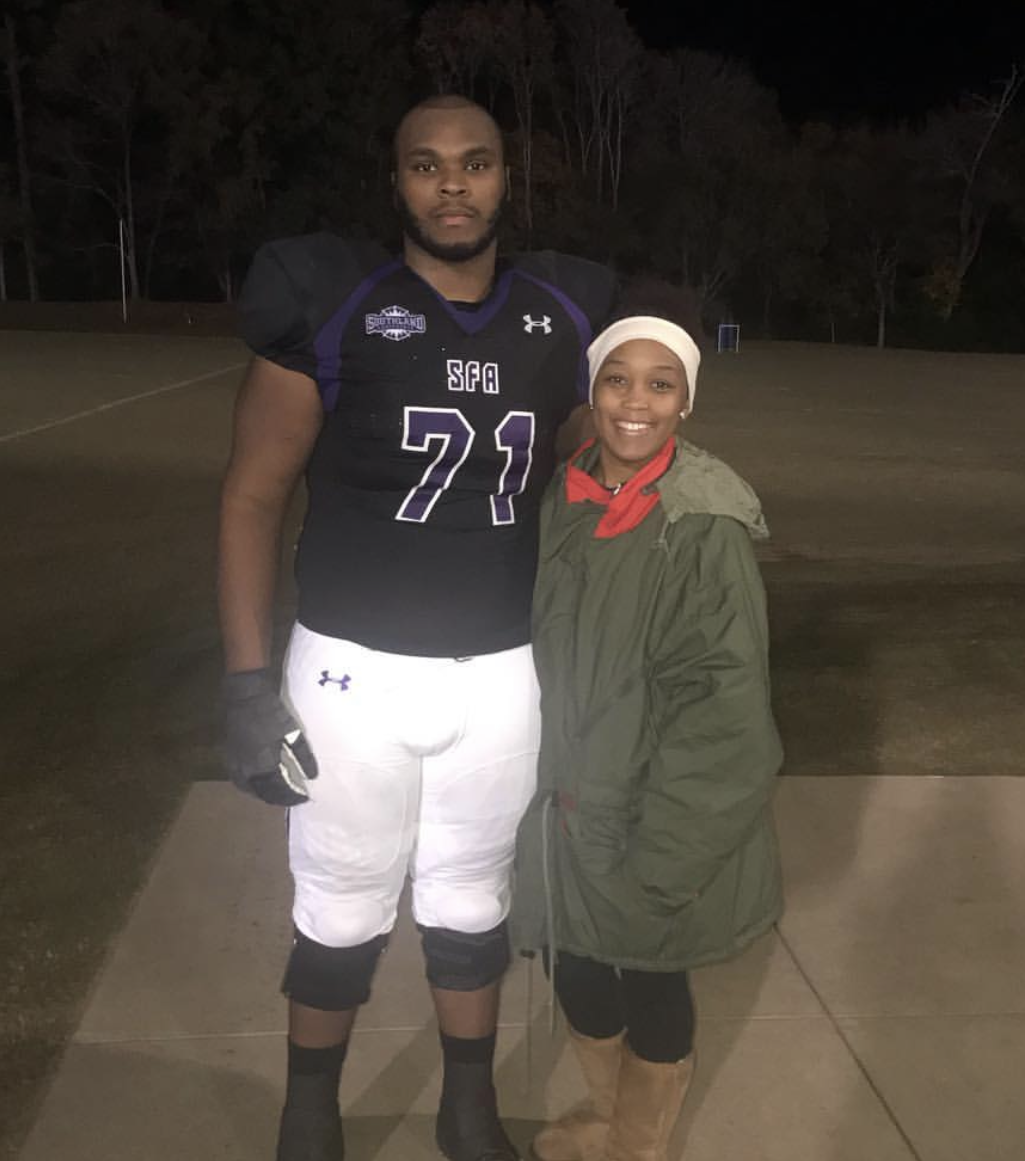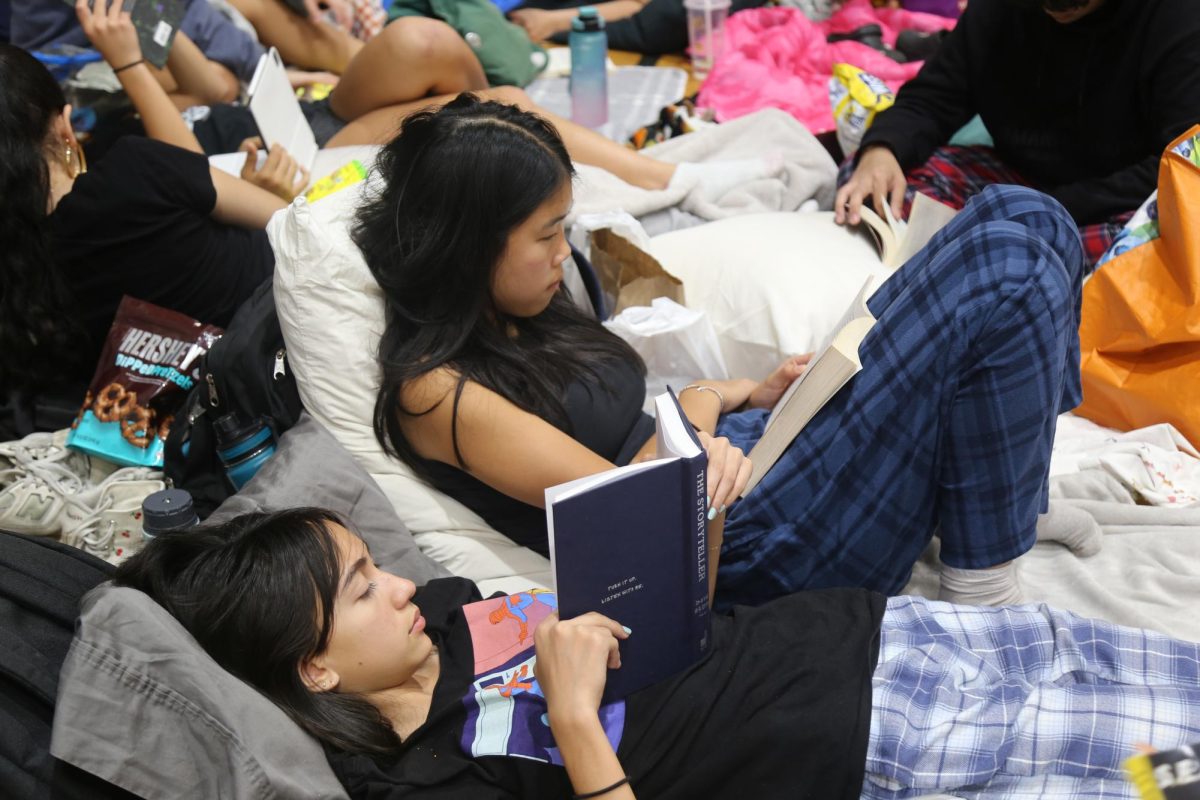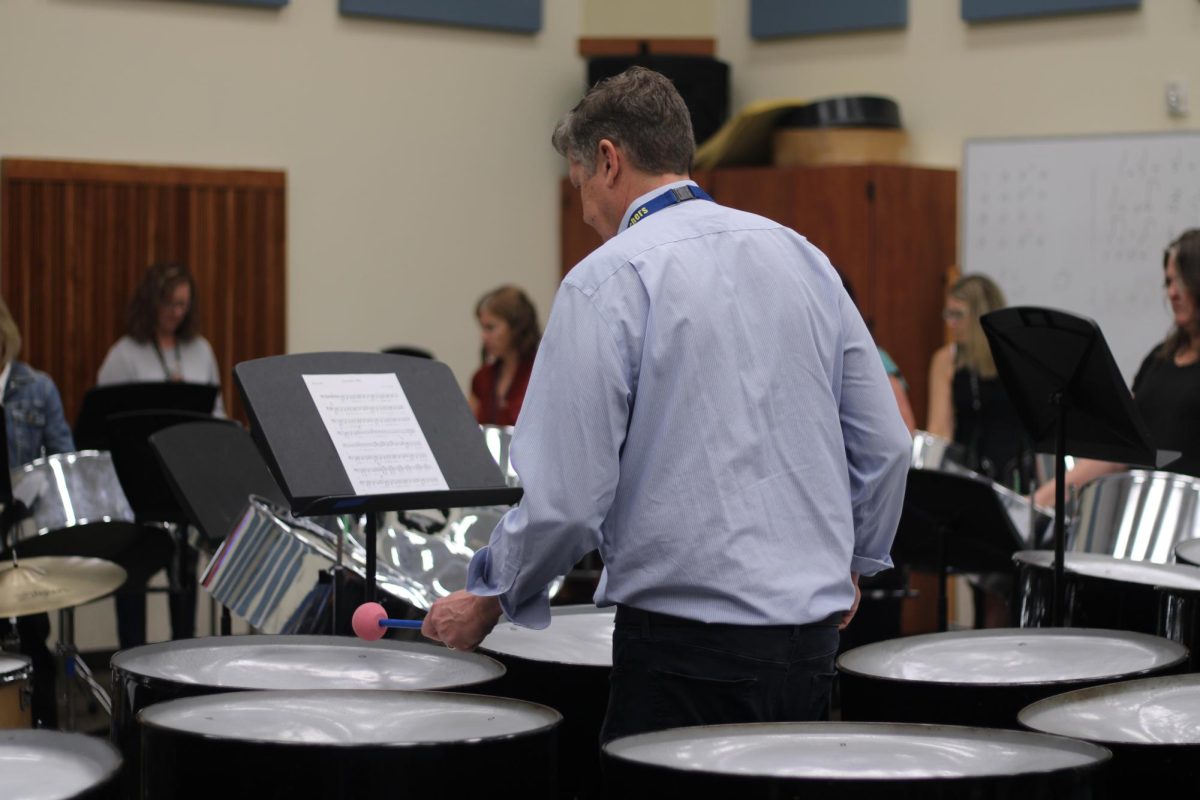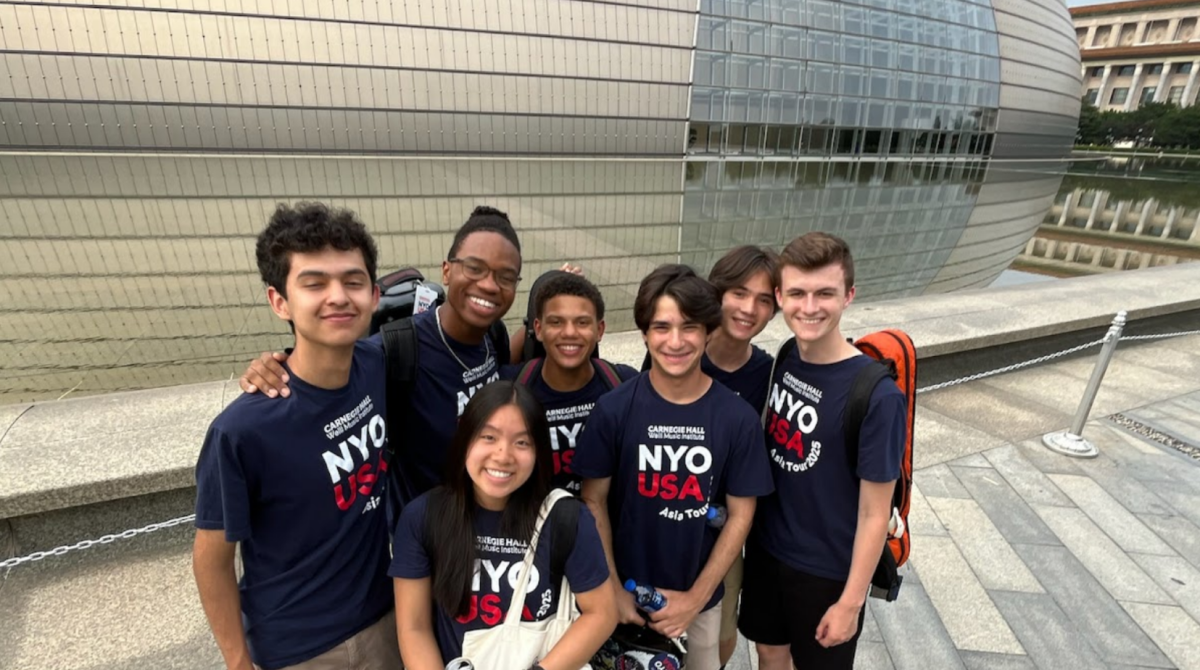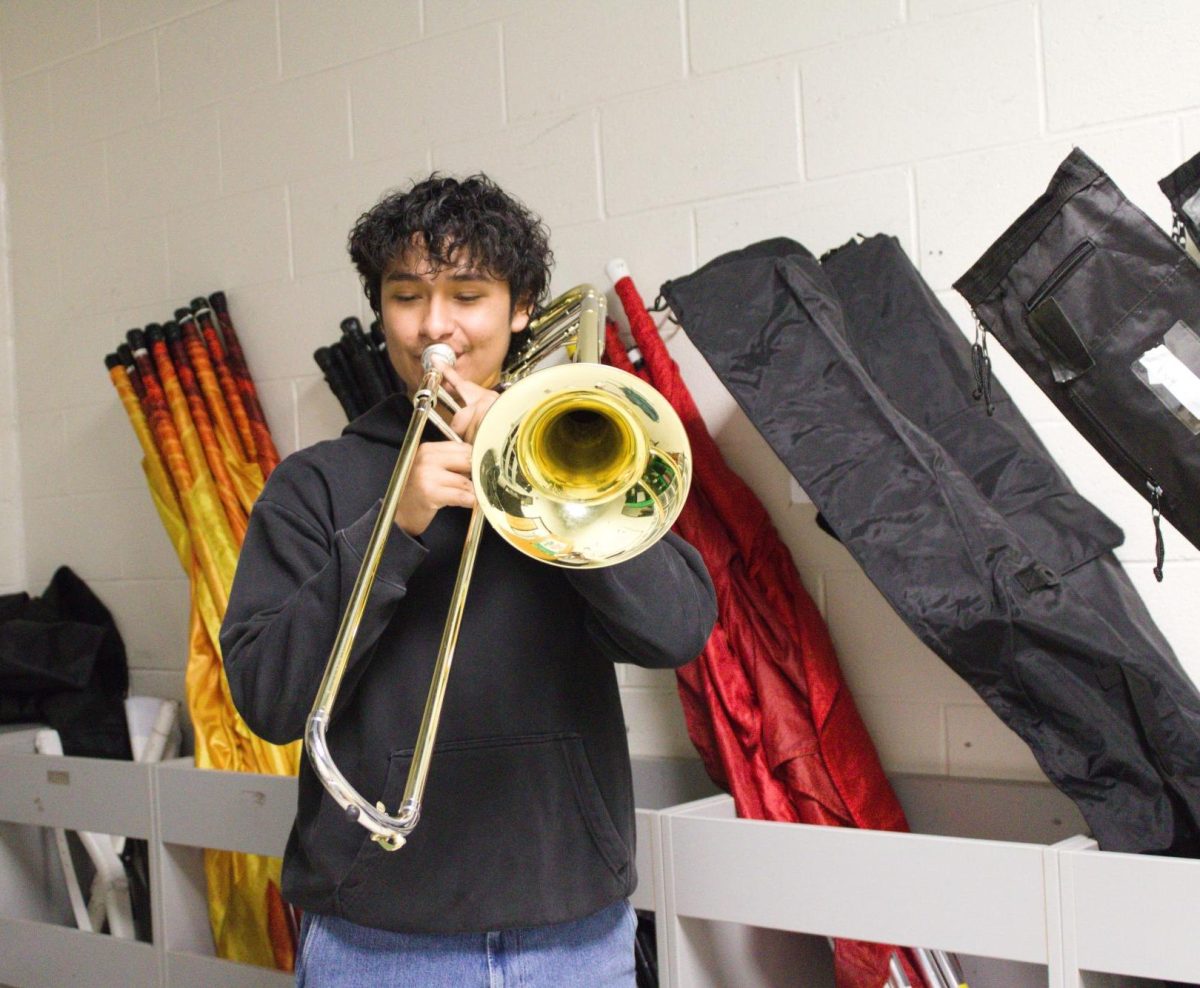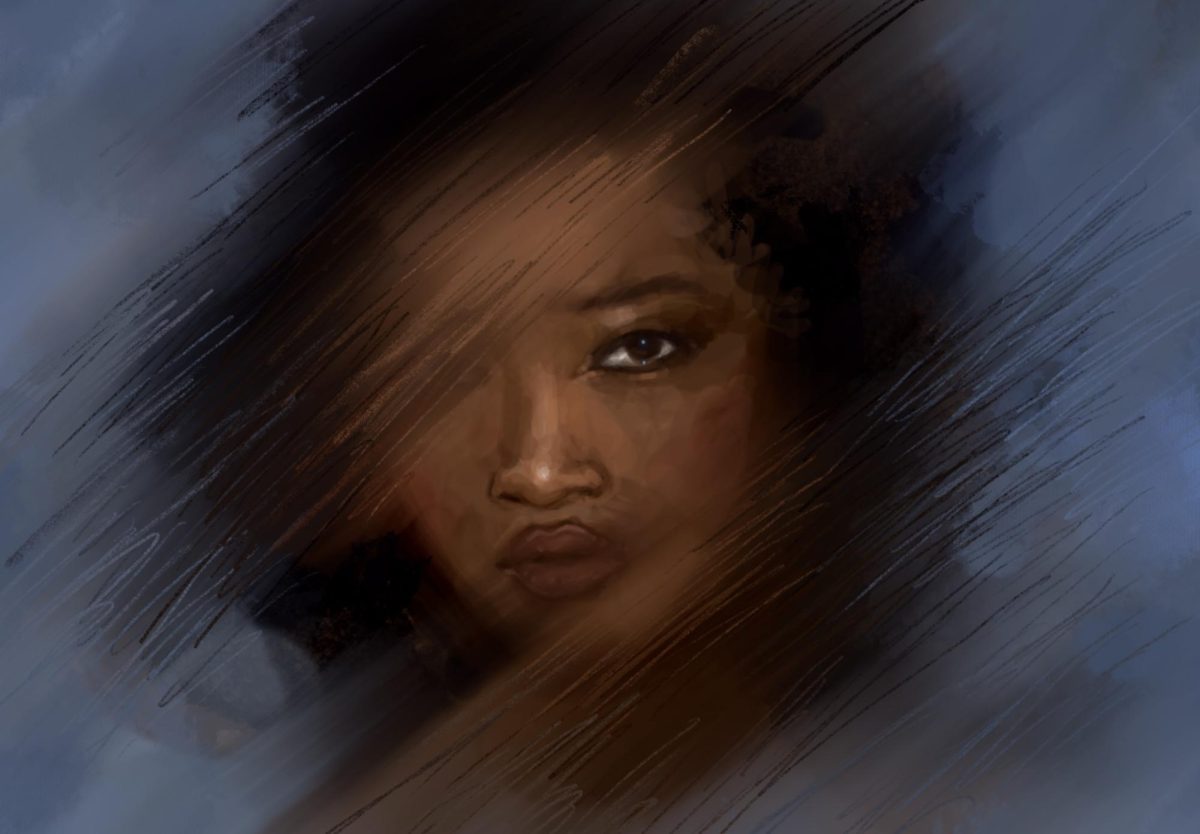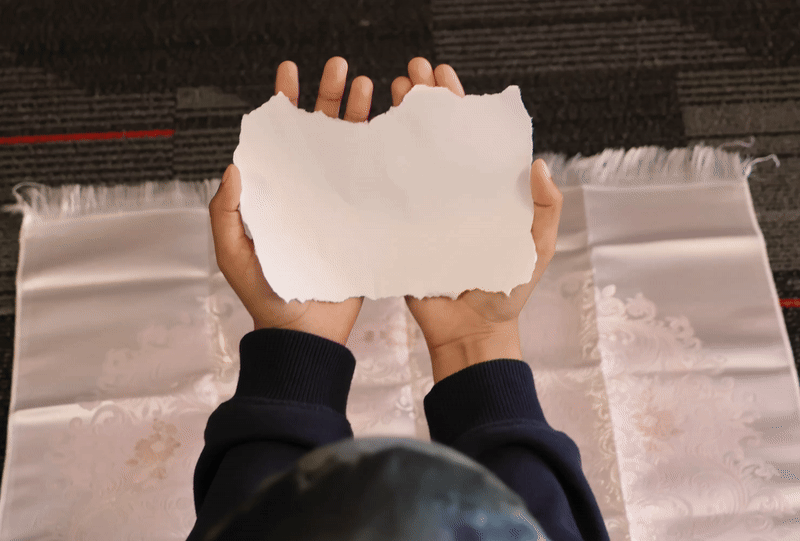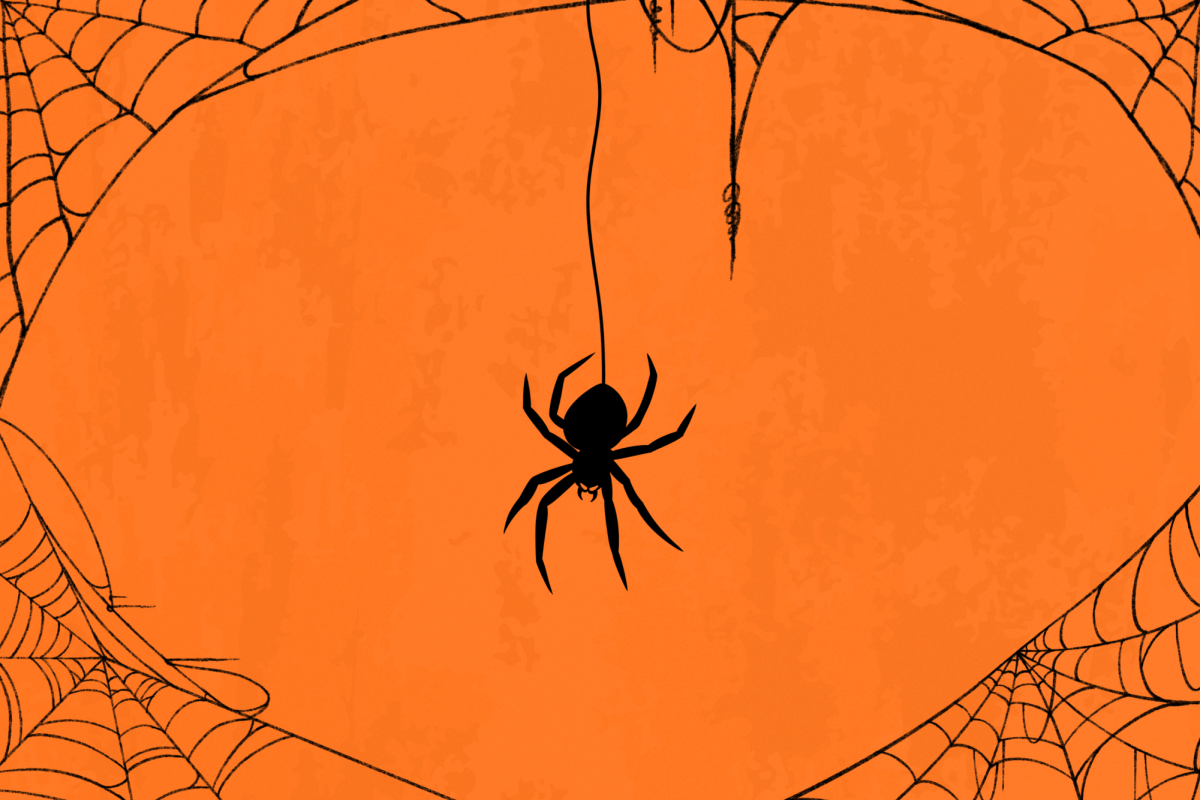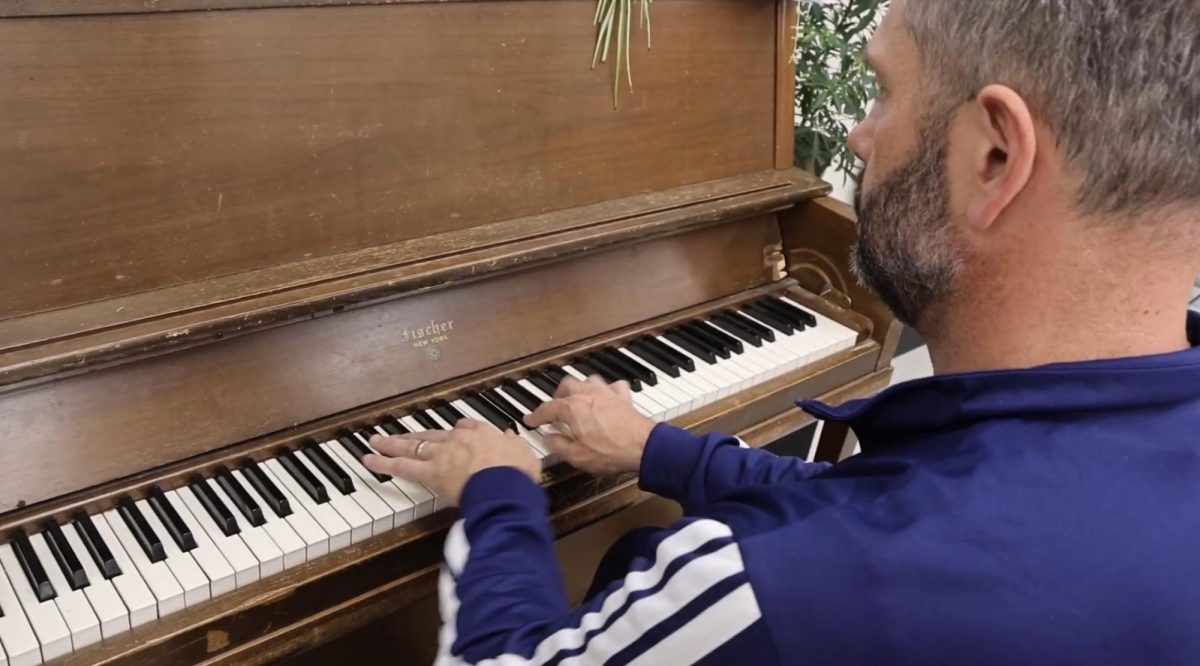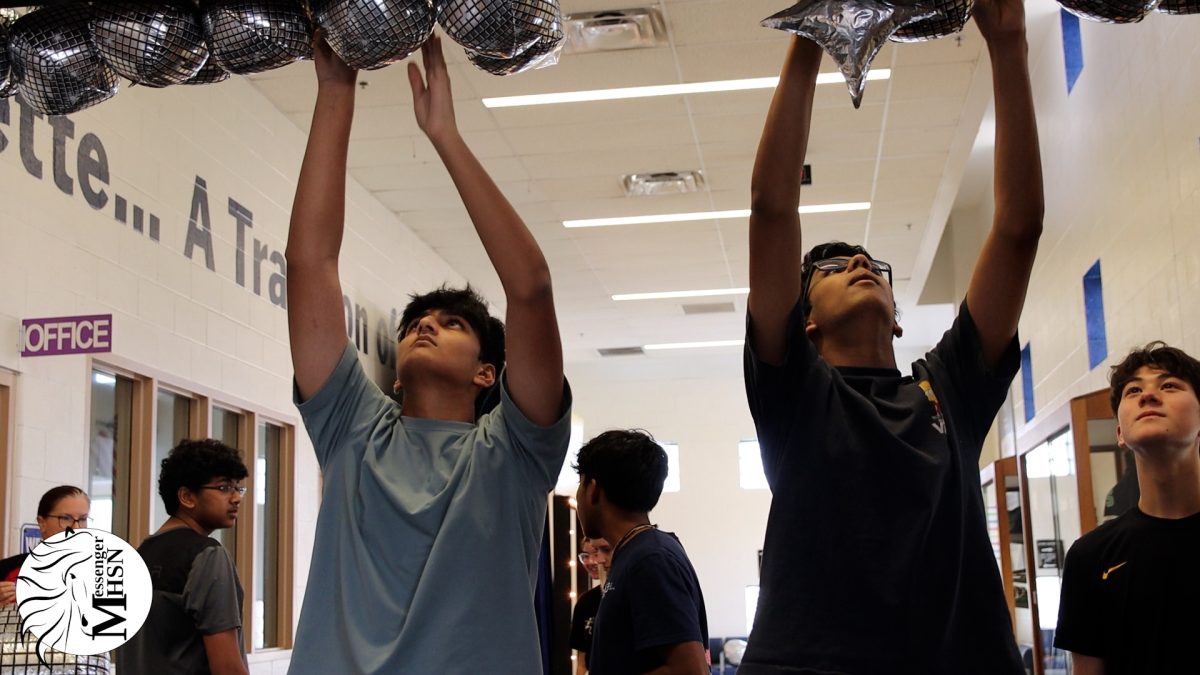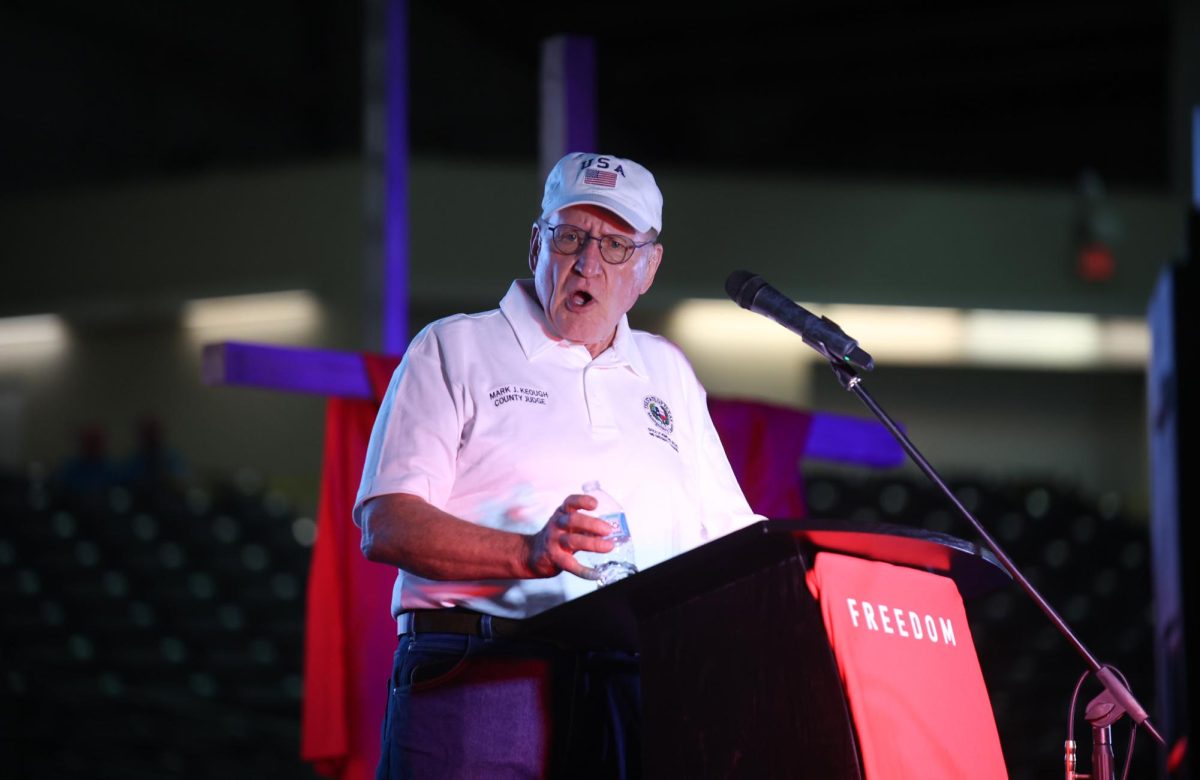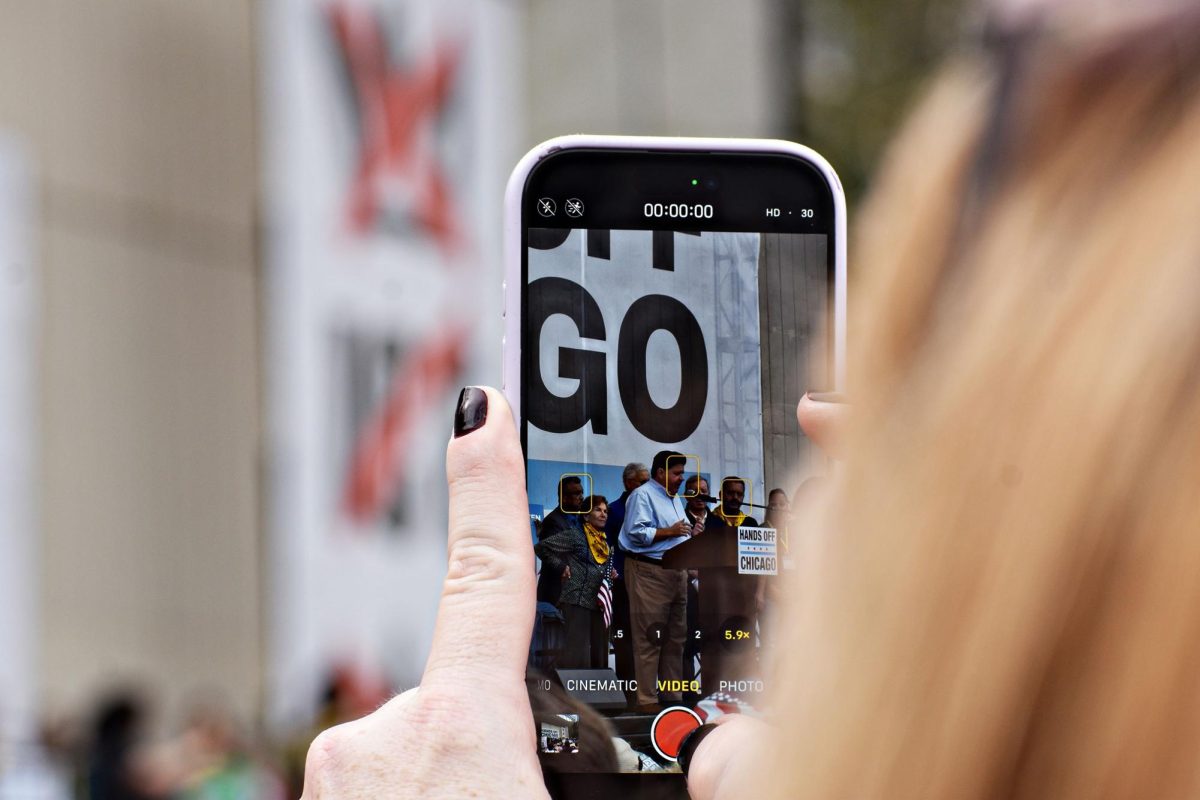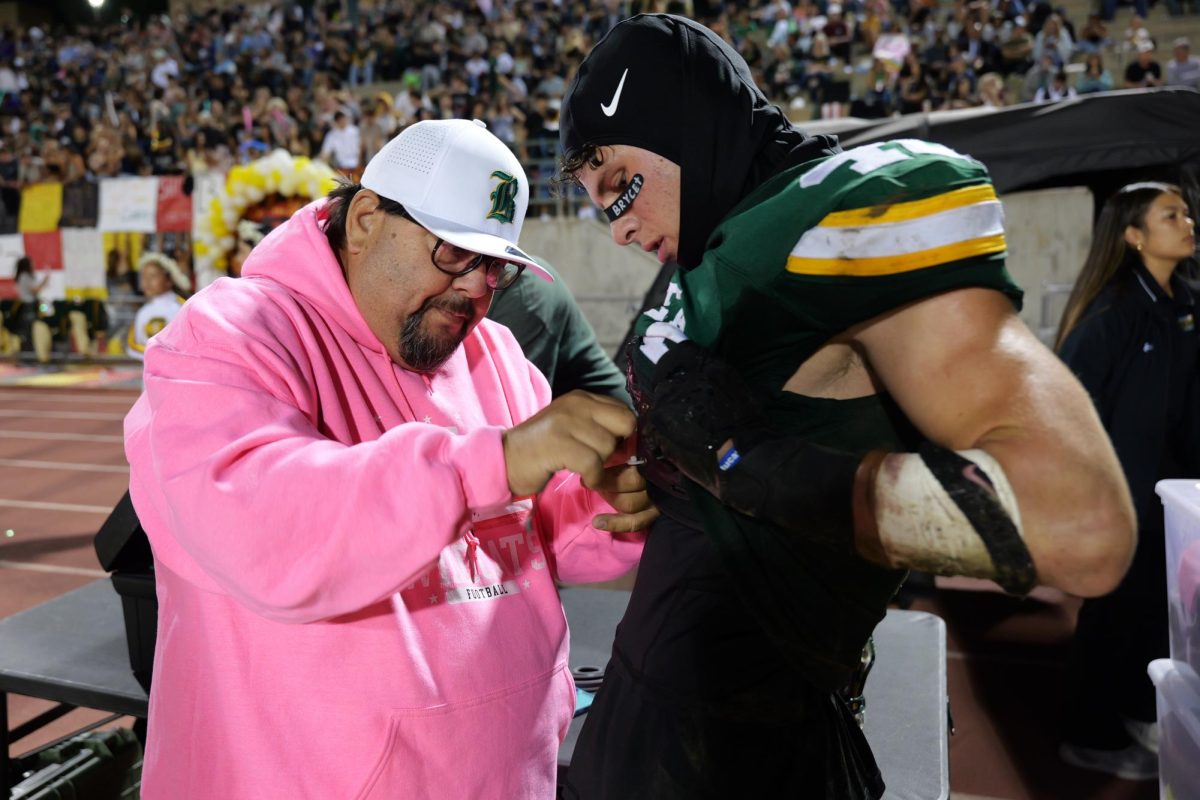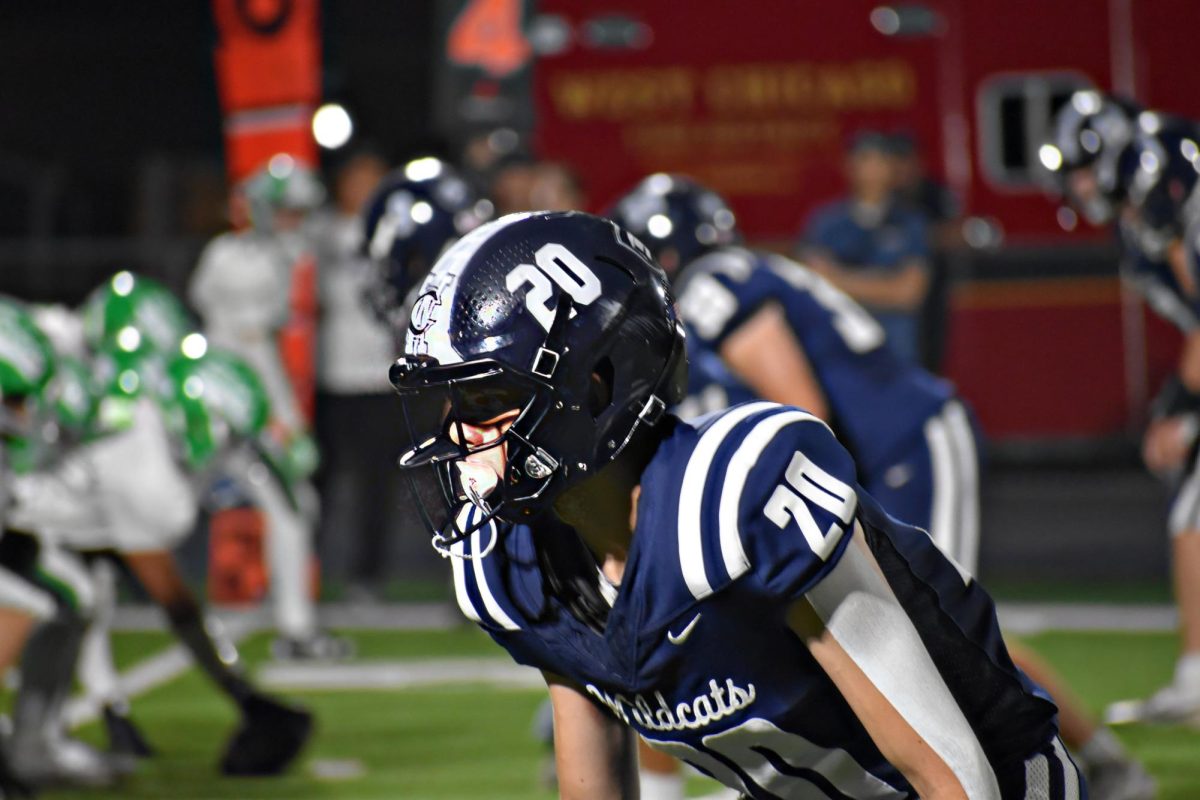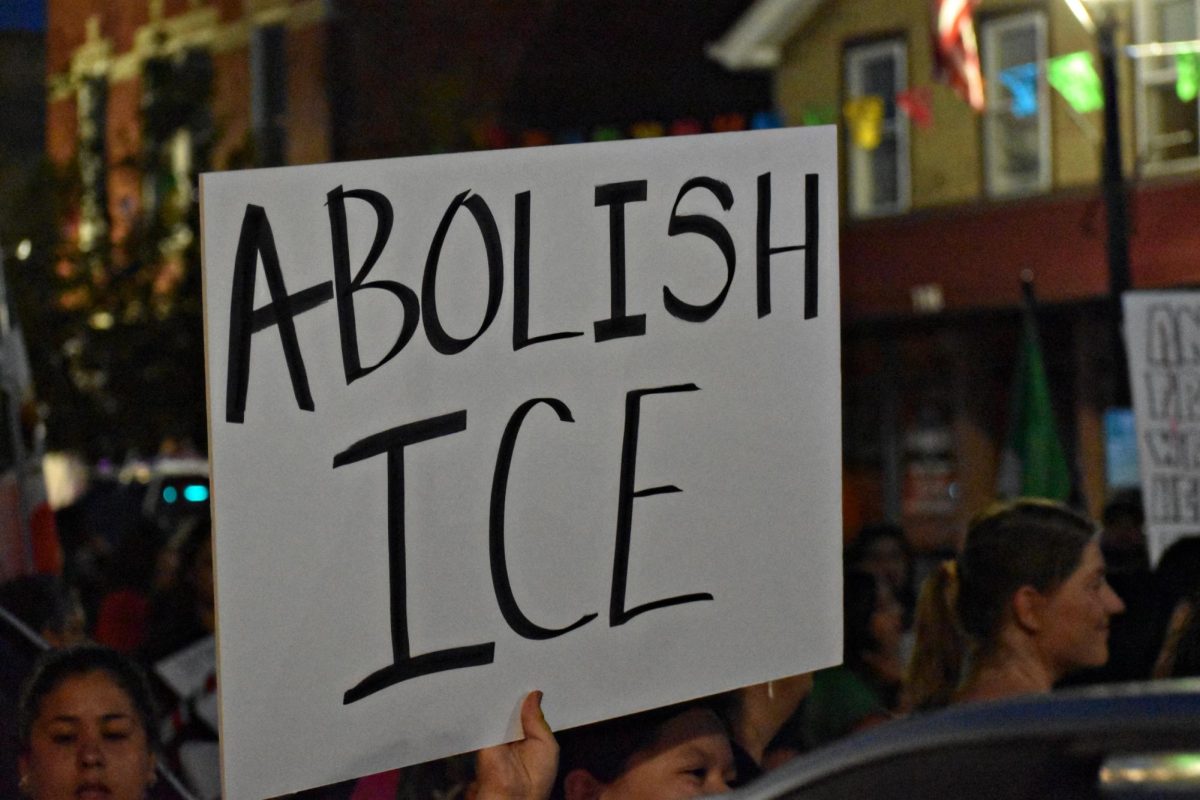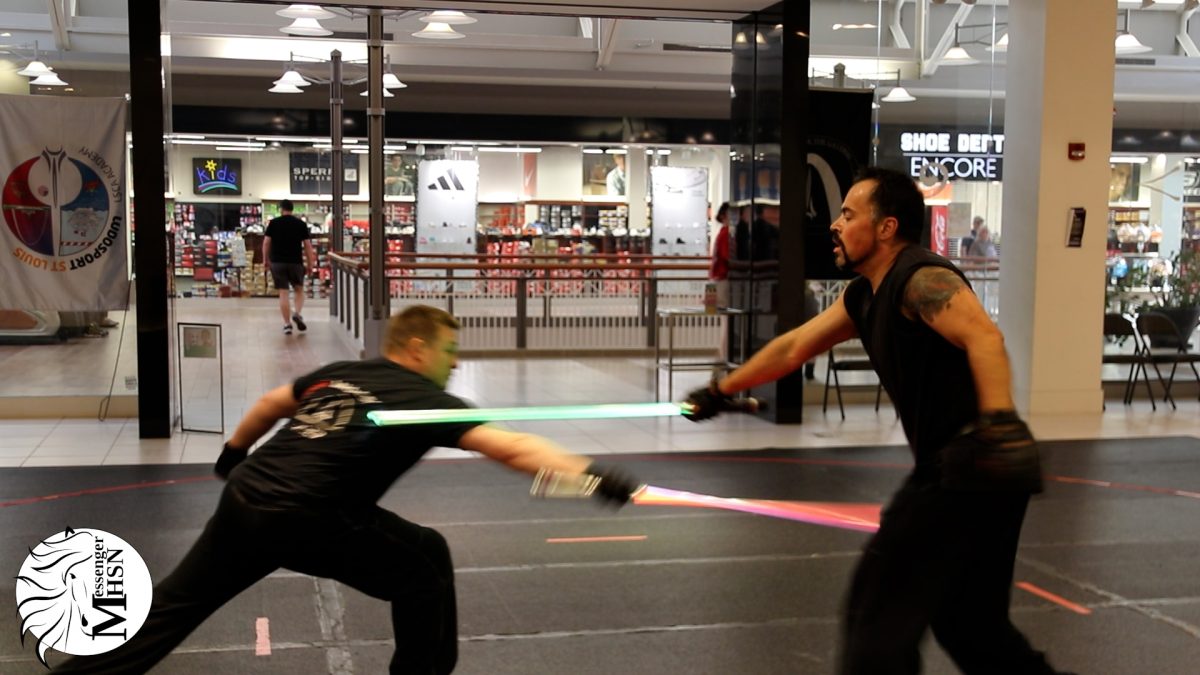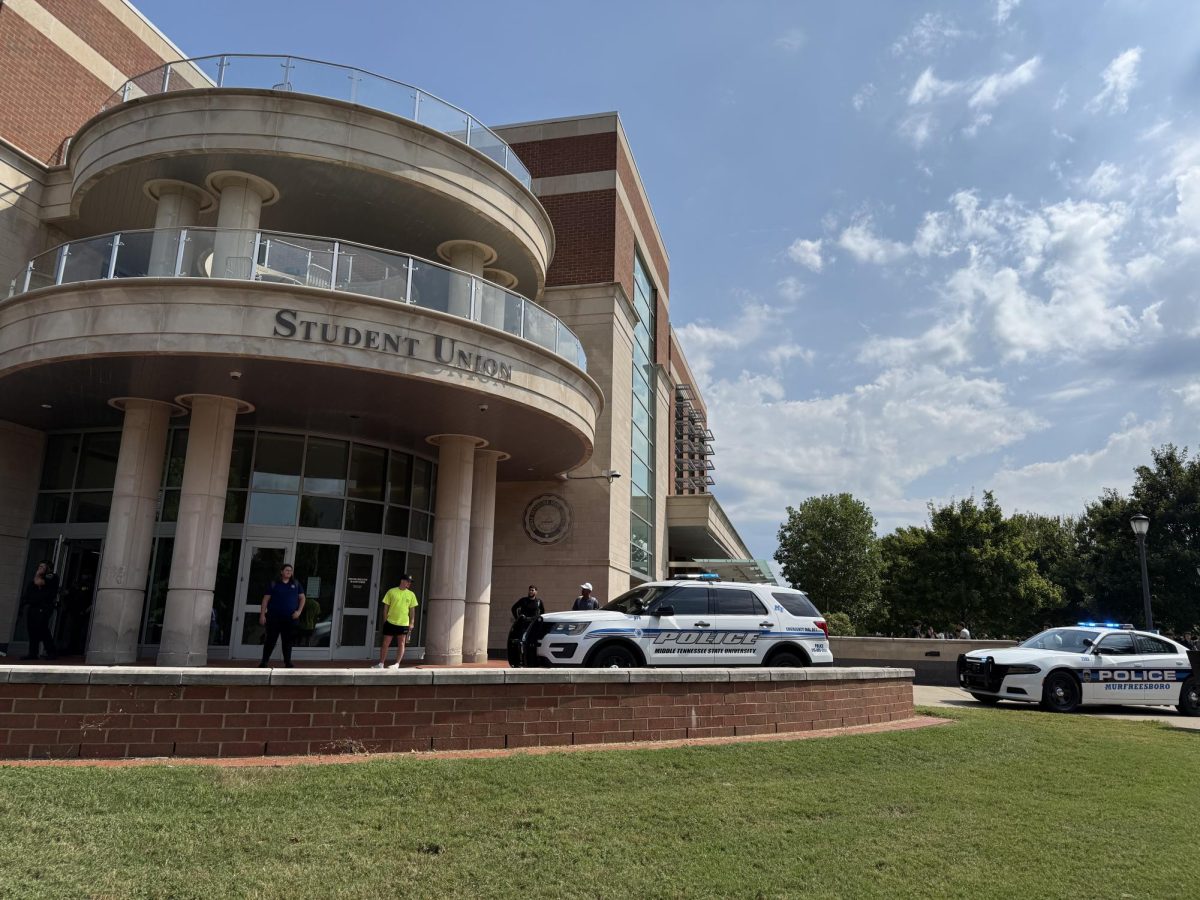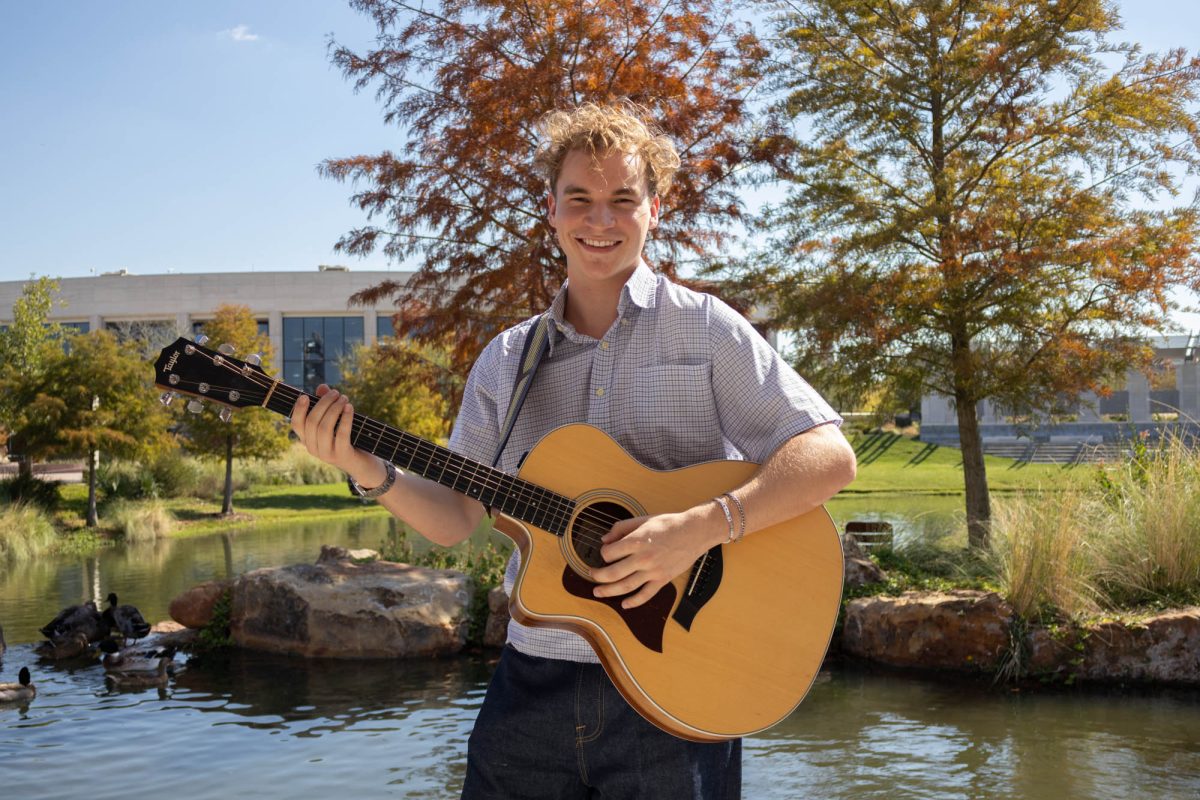A small group of Middle Tennessee State University (MTSU) football players and members of the Blue Zoo walked into the Student Union at 11:25 a.m. on Sept. 16, yelling and making noise with whistles and airhorns. They were filming a yearly Homecoming tradition: Raider Traitor.
The tradition involves team members finding students on campus wearing merchandise from another college and giving them MTSU shirts to wear instead. However, with the loud noises involved in this tradition, people became scared and started yelling and screaming.
Students who wanted nothing to do with the chaos ran from the building, Edwin Kaup, the MTSU Police Department chief, said at a Student Government Association Senate meeting on Sept. 18.
“We are always going to respond like it’s an active shooter,” Kaup said. “If we get a bunch of people running or shots fired, we’re going to respond like that no matter what. Even if we can prove it wrong just from the phone call or just from the cameras.”
Since universities across the United States went back into session beginning in August, several have seen hoax active shooter calls. Because of that trend, MTPD increased training on how to “smell out the hoax,” Kaup said.
Dispatchers and others at police departments used campus cameras to see the building and determine if there was a threat. MTSU police and Rutherford County sheriff’s deputies who responded to the alleged active shooter call by 11:28 a.m. quickly determined the threat to be false, according to police on the scene and Kaup.
“There are some people who ran out [of the Student Union] screaming,” Kaup said. “People outside thought that was a problem. Then they texted. Then everyone started freaking out. It had turned into an active shooter when nobody heard a shot, nobody heard a person, nobody heard anything.”
The week before MTSU’s false alarm, suspect Tyler Robinson allegedly shot and killed conservative activist Charlie Kirk at Utah Valley University, and a student at a Colorado high school shot two teens, causing tensions to run high.
“The context today is different than it was even just a few years ago,” Ron Henderson, chair of the Department of Physics and Astronomy, said. “If you saw a dog with a policeman at a building a few years ago … you might think it’s training. Your first thought probably is not going to be, ‘Do we have an active shooter?’ That’s a problem of today, because of the events of the last [two weeks].”
The university never sent out an active shooter alert to students and faculty, nor was the campus put on lockdown. When students ran out of the Student Union, though, some ran to the James E. Walker Library and told the front desk, causing the library to go into a precautionary lockdown.
“My job is to protect you,” Kaup said. “It’s not to message you and the university. If I’m on the scene, I’m not going to send something out. My job is to protect first, and then we’ll message if that protection is to stay out and stay away from this building.”
A lockdown or a shelter-in-place order could have lasted up to seven hours, Kaup said, due to the size of the Student Union and the library, both of which police would have to search.
“When I hit that button, I cannot lift a lockdown until I’m 100% certain there is no threat to anyone,” Kaup said.
The MTSU police did not send out any alert through the Rave Alert system until after they confirmed there was no threat, a decision criticized by students, faculty and parents.
“I kept looking for the critical alert, because … we’ve been told that a critical alert is the first kind of information that you’ll get from the university,” Sally Ann Cruikshank, a journalism professor, said. “Nothing.”
Despite no alert, news of a possible active shooter quickly spread across campus through social media and texts.
“I always think perspective is key,” said Todd Moore, the chair of the Department of Geosciences. “The whole situation, from students communicating with one another, [to] students reporting a concern they had, that’s a good thing. We don’t ever want to become so desensitized that we fail to do that.”
That night, MTSU President Sidney A. McPhee sent a campus-wide email. In it, he thanked police, explained the situation and said that he asked MTPD to send an alert if there was a “significant presence of emergency responders on campus.”
Still, some didn’t think McPhee’s email was enough, but others thought it showed that the administration responded to complaints from students, faculty and parents.
“It’s nice to know that we have the kind of leadership who learn and reflect,” said Amy Atchison, chair of the Department of Political and Global Affairs.
Many on social media, particularly YikYak — a platform to post anonymously at one’s university — criticized the university for its lack of original message and McPhee’s follow-up email. While some posts mentioned the football team related to the situation, there were no clear calls for an apology.
Sidelines reached out to the Blue Zoo and MTSU Athletics, but both declined to comment.
There will be no repercussions for students involved in the incident, said Andrew Oppmann, a university spokesperson.
“Nobody did anything wrong,” Oppmann said. “There was no infraction … We’ve done [Raider Traitor] every year.”
This story was originally published on MTSU Sidelines on September 25, 2025.


